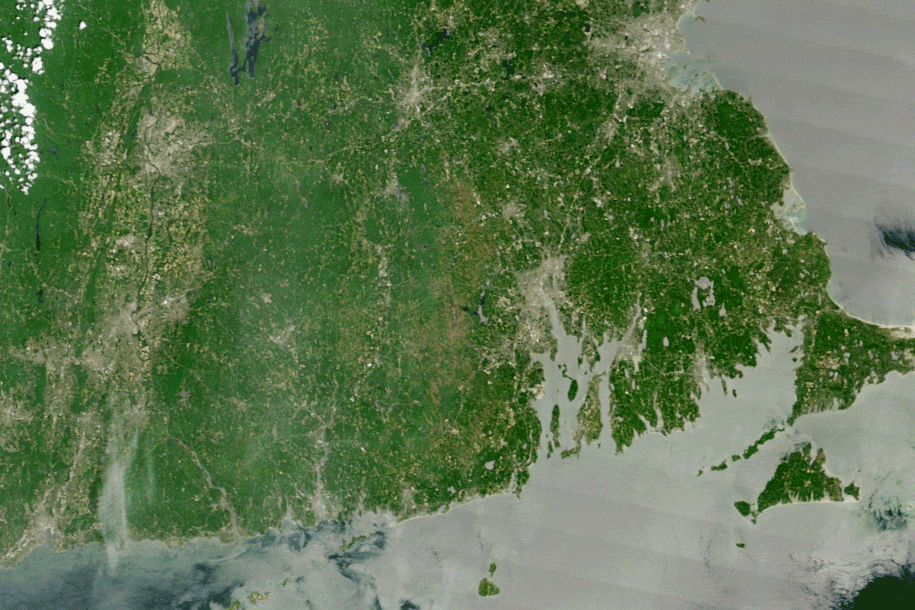
The impact of a pesky bug in the Northeast U.S. is apparent in satellite images of forest areas taken by NASA.
The European gypsy moth caterpillar has taken a big bite out of New England’s hardwood forests, the images reveal. The caterpillar has enjoyed a population boom in 2016, and between May and June newly hatched insects have chomped away at the forests’ leaves. While wildfires cause significant destruction of the world’s forests, insects and disease also pack a mighty punch.
Scientists say two key factors have led to the of the caterpillar’s exploding growth: the decline of one of the gypsy caterpillar’s main predators, and dry seasons that have staved off pathogens that control the population of the fuzzy brown bug.
Though the bug is having a significant impact on New England’s forests this season, scientists are not currently worried they will experience “widespread tree mortality,” NASA said in a statement.
More Must-Reads from TIME
- Cybersecurity Experts Are Sounding the Alarm on DOGE
- Meet the 2025 Women of the Year
- The Harsh Truth About Disability Inclusion
- Why Do More Young Adults Have Cancer?
- Colman Domingo Leads With Radical Love
- How to Get Better at Doing Things Alone
- Michelle Zauner Stares Down the Darkness
Contact us at letters@time.com